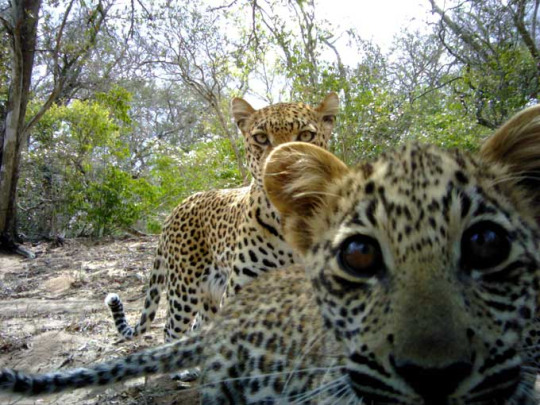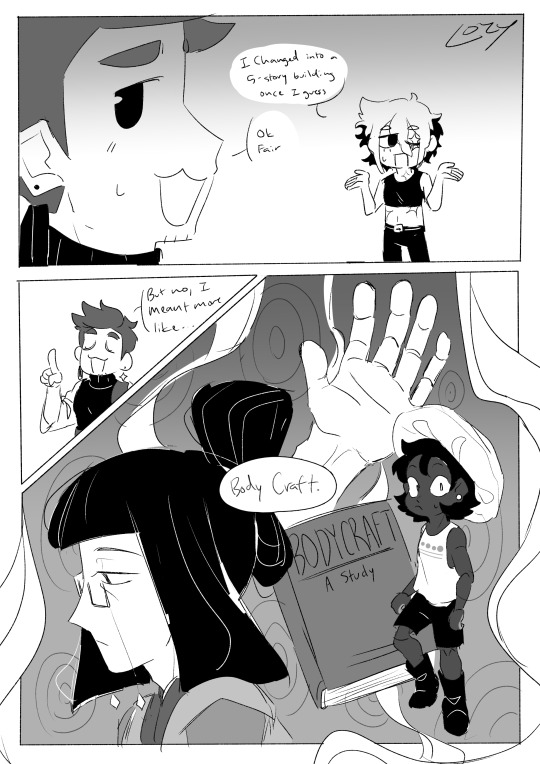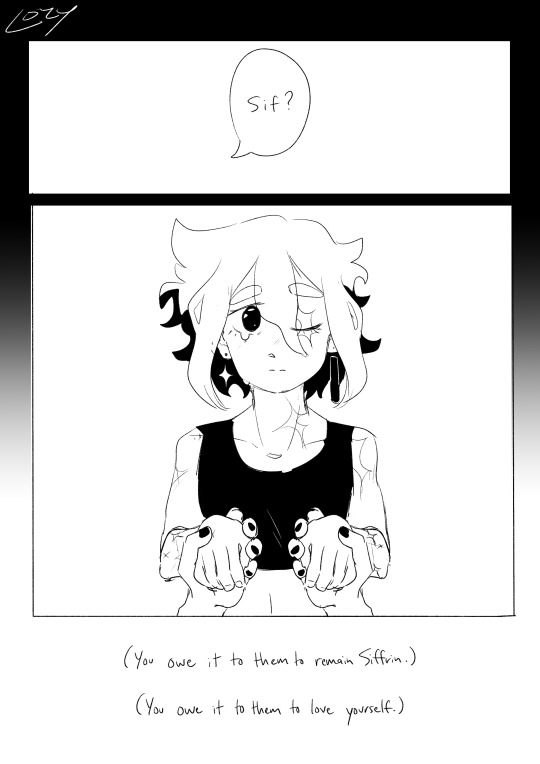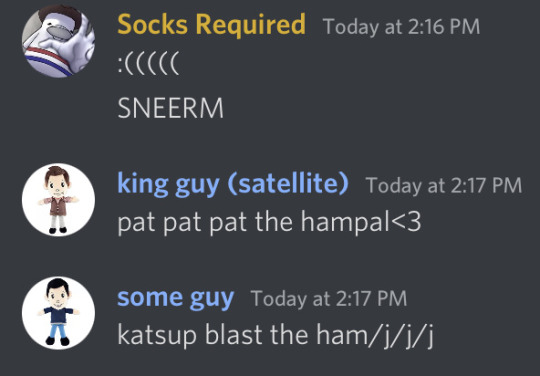#lozi
Text

Lozi man, Zambia, by Victoria Kelly
#lozi#zambia#africa#southern africa#folk clothing#traditional clothing#traditional fashion#cultural clothing
375 notes
·
View notes
Text
In southern Africa, leopards have long been harvested for their beautiful spotted furs. These coveted furs are often used in ceremonial regalia by cultural and religious groups in the area, making it difficult to address the dwindling wild cat population in the area.
Bridging the gap between animal conservation and cultural heritage, Panthera — a global wild cat conservation organization — has partnered with area communities and world-class designers to instead distribute synthetic furs for ceremonial garb.
This approach is ground-breaking and shows potential to be replicated in other areas of the world. In fact, new data shows that these initiatives have tripled the leopard population in the region.

Pictured: Two wild leopards are spotted in southern Africa. Photo courtesy of Panthera.
It started in 2013 when Panthera began its Furs For Life program when it was discovered that members of the Shembe Church were using as many as 15,000 leopard furs during religious gatherings.
Working with the Shembe community, Panthera created high-quality (and affordable!) synthetic leopard fur capes — amambatha — known as Heritage Furs. Since then, more than 18,500 capes have been distributed.
In 2019, Panthera extended these efforts with the Saving Spots initiative. The program was created in conjunction with the Barotse Royal Establishment of the Lozi people with the mission to preserve rich cultural traditions and declining wild cat populations.
Every year, hundreds of Lozi community members wear lipatelo, elaborate full-length skirts made of leopard and other animal furs, as well as mishukwe, lion-mane trimmed berets, as they gather for the Kuomboka Festival...

Pictured: Paddlers on the Nalikwanda Royal Barge wearing Heritage Furs.
Since implementing the Saving Spots program, the Barotse Royal Establishment has switched to over 1,350 synthetic fur lipatelo and 600 synthetic fur mishukwe. At a recent Lozi gathering, nearly 70% of participants wore garments of synthetic furs.
The idea was to maintain the sacred relationship the Lozi people have with these animals. By using a high-accuracy design, these synthetic furs have become trusted regalia to pass through future generations — all without causing harm to the animals they revere.
“It is important to conserve nature. If you don’t take care of nature, then you are headed for doom,” Lubinda Nyaywa, the chairperson of the Mwandi Council District said. “It’s a learning process for our young generations, teaching them that they must preserve, one, their culture, and, two, their natural resources.”
With the support of both the Lozi and Shembe leaders, affordable synthetic furs are gaining increased acceptance and popularity as alternatives to authentic furs. Some groups have even banned the use of authentic wild cat skins at future gatherings.
This, in turn, majorly contributes to the protection and stabilization of wild cat populations in the region.
As mentioned, new data suggests that Saving Spots has helped triple leopard densities in the southern region of Kafue National Park.
-via Good Good Good, May 4, 2023
#leopard#leopards#conservation#endangered species#environmentalism#regalia#traditional clothing#sustainability#ethically sourced#lozi#shembe#zambia#africa#good news#hope#sustainable clothes#fur#fake fur#faux fur#heritage#tradition
187 notes
·
View notes
Text
NORTH & EAST AFRICAN RESOURCES
The Anthropological Masterlist is HERE.
North Africa is an African region that spans the northern part of the continent. North Africa shares many cultural and linguistic similarities with the Middle East.
BERBER ─ “The Berber, or Amazigh, people are an African people. They are native to North Africa.”
─ Berber Encyclopedia (in French)
─ Amazigh Culture (in French)
─ Berber Dictionary (in French)
GUANCHE ─ “The Guanche people are an African people. They are native to the Canary Islands.”
─ Guanche Information
─ Guanche History
KUSHITE ─ “The Kingdom of Kush was a Northeast African civilization that lived from 1070 B.C.E. to 550 C.E. They lived in modern-day northern Sudan and southern Egypt.”
─ Kushite Information
─ Kerma History
─ Meroitic Language
KABYLE ─ “The Kabyle people are an African people. They are native to northern Algeria.”
─ Kabyle History (in French)
East Africa is an African region that spans the eastern part of the continent. East Africa shares many cultural and linguistic similarities with the Middle East.
BAGANDA ─ “The Baganda, or Ganda, people are an African people. They are native to Buganda in Uganda.”
─ Baganda Culture
BANYARWANDA ─ “The Banyarwanda, or Kingdom of Rwanda, were an African people that lived from the 15th century C.E. to the 20th century C.E. They lived in modern-day Rwanda.”
─ Rwanda in the 20th Century
─ Genocide in Rwanda
DINKA ─ “The Dinka people are an African people. They are native to South Sudan.”
─ Dinka Culture
─ Dinka Language
─ Dinka Language Grammar
ETHIOPIAN ─ “The Ethiopian people are an African people that share the Ethiopian culture. They are native to Ethiopia.”
─ Ethiopian History
─ Afar Language
─ Ethiopian Music
KIPSIGIS ─ “The Kipsigis, or Kipsigiis, people are an African people. They are native to Kenya.”
─ Kipsigis Recordings
LOZI ─ “The Lozi, or Barotse, people are an African people. They are native to Barotseland in western Zambia.”
─ Barotseland Information
─ Lozi Language
LUGBARA ─ “The Lugbara people are an African people. They are native to the West Nile region in Uganda.”
─ Lugbara Culture
─ Sacrifice in Lugbara Culture
MAASAI ─ “The Maasai people are an African people. They are native to Kenya and northern Tanzania.”
─ Maasai Information
─ Maasai Culture
─ Maasai Language
MAKUA ─ “The Makua, or Makhuwa, people are an African people. They are native to northern Mozambique.”
─ Makua Culture
SHONA ─ “The Shona people are an African people. They are native to Zimbabwe.”
─ Shona History
─ Shona Dictionary
SWAHILI ─ “The Swahili, or Waswahili, people are an African people. They are native to the Swahili coast.”
─ Swahili Information
─ Swahili Culture
─ Swahili Dictionaries
VENDA ─ “The Venda people are an African people. They are native to the South African and Zimbabwean border.”
─ Venda Culture
─ Venda Culture
#resources#north african#east african#berber#kabyle#guanche#kushite#baganda#banyarwanda#dinka#ethiopian#kipsigis#lozi#lugbara#maasai#makua#shona#swahili#venda
82 notes
·
View notes
Photo

Library Living Room London
Mid-sized trendy open concept medium tone wood floor and beige floor living room library photo with white walls, a wood stove, a plaster fireplace and no tv
0 notes
Photo

Contemporary Living Room - Library
Living room library - mid-sized contemporary open concept medium tone wood floor and beige floor living room library idea with white walls, no fireplace, a plaster fireplace and no tv
0 notes
Note
fish n shiny! :000

:D I will absolutely help you rearrange your room. and thank you for hydration reminder

FRIENDS!! and yes we should totally steal a shopping cart. theft is condoned when its funny /hj
1 note
·
View note
Text








thoughts on transness and dysphoria and homesickness and change from the perspective of someone who can never go back.
#in stars and time#isat#isat spoilers#in stars and time spoilers#siffrin#siffrin isat#isafrin#my drawings#yes sif is transmasc yes isa is transmasc yes odile is transfem#bonnie hasn't done body craft but they will probably. in the future. when theyre not literally 2#i did not include mirabelle. beause she is my cisgirl queen#thats all folks#lozy edited this post because he realized he forgot to draw the star on loop's chest#isat fancomic
852 notes
·
View notes
Note
hey hey hey glitchy :)
did you know that i am almost always awake at night on my side of the world? just a fun fact about meeeee

#im goin to strangle you to sleep#cmere#pspspspspsps#cmere 🤌#psppspsps cmon out#STRANGLES YOU#my art#fren shenanigans#fren ask#louzy fren#fren louzy#lozy frennn#!!!#main sona#sona squidd#squidd#squidd sona#sona#S L E E P
127 notes
·
View notes
Note
ricky and/or blake, what music genres do you guys like?

(they are friends ur honor,,,)
[asks are open <3]
#oc dump#lozy art dump#trask delivery#rickyrolly#rickroll dump#rickroll oc#brake oc#brake dump#brick brake#ozztunes#ozzy frennn<33
57 notes
·
View notes
Note
*skitters across the floor like a rat*



#i wanna quit#asks#employee spooki#lozy get the rat traps#omniverse store#cool kids omniverse#(employee lozy is in the storage room rn) sorry can't help ya spooki -employee lozy 🧀
104 notes
·
View notes
Text

Lozi woman, Zambia, by Lukuta Malcolm Munyaza
#lozi#zambia#africa#southern africa#folk clothing#traditional clothing#traditional fashion#cultural clothing
147 notes
·
View notes
Text
EXCLUSIVELY interested in vampires who could fix a screen-door. I couldn’t give a shit about how well you play the fucking harpsicord, do you know what WD-40 is and if not immortal life is wasted on you.
#honestly jury’s out on if lozy could fix it but she could sure as shit break it#tho she knows about oiling hinges so theres that#luka#now that man can make the screen make the door make the frame make the house#helen’s academy for lower class vampires with real people skills#i know parasitism is the point and thats why vamps have no skills besides being pretty but CMON
5 notes
·
View notes
Text
I seem to have missed #ILoveHorsesDay yesterday 😭 so since it’s also still #WorldSnakeDay here is a duo to cover both:

Lozi artist (Western Province, Zambia)
wood bowl with lid (mukeke) x 2
L: horse c. 1905-16
R: snake early to mid-20th c.
National Museum of African Art, Smithsonian Institution
“CURATORIAL RESEARCH Arts of a nation. Lozi works of art are rare in U.S. collections, though they display formal creativity and a remarkable history.
Turn-of-the-20th-century Lozi king Lewanika (r. 1878-1916) was both a savvy politician and a renowned artist. Lewanika negotiated to have his kingdom, Barotseland, established as a British Protectorate and not a colony. His talents also included carving wood and ivory, and basket weaving, as well as fabricating spectacular barges and pageants. He formed a workshop in the royal capital and sold Lozi wares, thus demonstrating a commitment to the arts that influenced art production throughout his kingdom.
Curatorial research at the museum indicates that the bowl with the horse atop its lid was likely carved by Lewanika or his workshop. The fanciful bowl in the shape of coiled snakes was probably carved during the reign of Lewanika's son and successor, and reveals the ongoing artistic creativity in this region.”
#animals in art#20th century art#African art#Lozi art#woodwork#bowl#horse#snake#serpent#I Love Horses Day#World Snake Day#animal holiday#museum visit#Smithsonian National Museum of African Art
7 notes
·
View notes
Text

Duality of man
Subjects: @satellite-starss and @lozylouzer
36 notes
·
View notes
Note
hey ymir! can you tell us more about the kitty cat?


cat kitty cat cat kitty cat cat
25 notes
·
View notes
Note
fancy cross' fluff looks like a worm on a string/j/j/pos which tbh could be a thing cuz of epic xD

(/nsrs)
#FAMNCY CROCS#fancy cross#cross sans#crosssans#undertale#undertale fanart#undertale au#undertalegame#undertale alternate universe#ut au#digital art#digital drawing#krispz#krispz art#krispzchaps#lozylouzer#lozy fren!!!#are you lozy tho I can’t remember😭#Sorry#asks open
8 notes
·
View notes